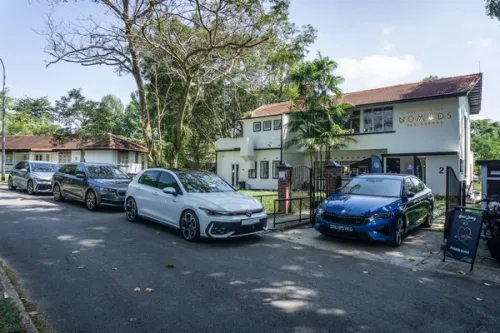Autonomous test vehicles from collaboration between BMW Group, Intel and Mobileye on the roads by the second half of 2017
A close collaboration by the BMW Group, Intel and Mobileye will see a fleet of approximately 40 autonomous BMW vehicles on the roads by the second half of 2017. Signaling the significant advancements made by the three giants towards fully-autonomous driving, BMW, Intel and Mobileye revealed during a podium discussion at the joint press conference at CES 2017 that the BMW 7 Series will be used as the automobile platform for the trial, which will commence in the United States and Europe. The partnership between the BMW Group, Intel and Mobileye has been established since last July. Right after the formation, the companies have developed a scalable architecture that houses the versatility to allow other automotive developers and car-makers to create customised state of the art designs that are unique to their brands. The architecture ranges from individual key integrated modules to a complete end-to-end solution that is touted to provide a wide range of differentiated consumer experiences. Mr Klaus Fröhlich, who sits as a member of the Board of Management of BMW AG for Development, said: "Making autonomous driving a reality for our customers is the shared ambition behind our cooperation with Intel and Mobileye. This partnership has all of the skills and talent necessary to overcome the enormous technological challenges ahead and commercialize self-driving vehicles. Therefore, we are already thinking in terms of scalability and welcome other companies – manufacturers, suppliers or technology companies – to participate and contribute to our autonomous platform. This year our fleet of vehicles will already test this joint technology globally under real traffic conditions. This is a significant step towards the introduction of the BMW iNEXT in 2021, which will be the BMW Group’s first fully autonomous vehicle.” Echoing Mr Fröhlich’s views, Intel CEO Brian Krzanich, added: “From an industry perspective, we are already seeing savings and speed in development by sharing development costs and in pooling resources to develop a complete autonomous platform. The car to cloud system will perform with consistent, predictable behavior and is validated to the highest level of safety. That’s why this partnership is breaking new ground. We have established a dedicated team with clear, shared goals and a culture of innovation and agility and accountability.” Professor Amnon Shashua, who is concurrently Mobileye’s Co-Founder, Chairman and CTO, said: “Over the last six months, we have made very good progress in designing a state-of-the-art solution for autonomous driving on both highways and in urban areas. The solution has been defined in a scalable manner to allow affiliate automakers to meet their unique needs.” The BMW Group will be responsible for driving control and dynamics, evaluation of overall functional safety, overall component integration, production of prototypes and eventually scaling the platform via deployment partners. Intel will see to the integration of high performance computing elements. Using world-class processor and FPGA technologies that promise to deliver an efficient balance of performance and power, the newly launched Intel® GO™ solution appears to be Intel’s answer to safe autonomous driving. Within the car, the customisable Intel® GO™ solution enables individualised and ad-hoc critical functions such as sensor fusion, driving policy, environment modeling, path planning and decision making to be built into the system. Mobileye oversees the portion on automotive-grade functional safety via its proprietary EyeQ®5 high-performance computer vision processor. The EyeQ®5, which works with Intel CPU and FPGA technologies, is responsible for the processing, localisation and interpretation of input collated from the 360-degree surround view vision sensors. It is further disclosed that Mobileye will collaborate with the BMW Group separately to develop the sensor fusion solution, which works by garnering visual, radio and digital inputs from vision, radar, and lidar sensors to create a full model of the environment surrounding the vehicle. Mobileye will also work towards establishing a driving policy. This includes a set of learning algorithms that will be used to endow the vehicle system with the artificial intelligence required to safely negotiate complex driving situations. In its push for the autonomous platform, the partnership has plans to release hardware samples and software updates in the upcoming years. The BMW iNEXT model, which will be introduced in 2021, will lay the foundation for BMW Group’s autonomous driving strategy.


Credits:


Get the Best Price for your used car
from 500+ dealers in 24 hours

- Convenient and Hassle-Free
- Consumer Protection
Transparent Process
With No Obligation








